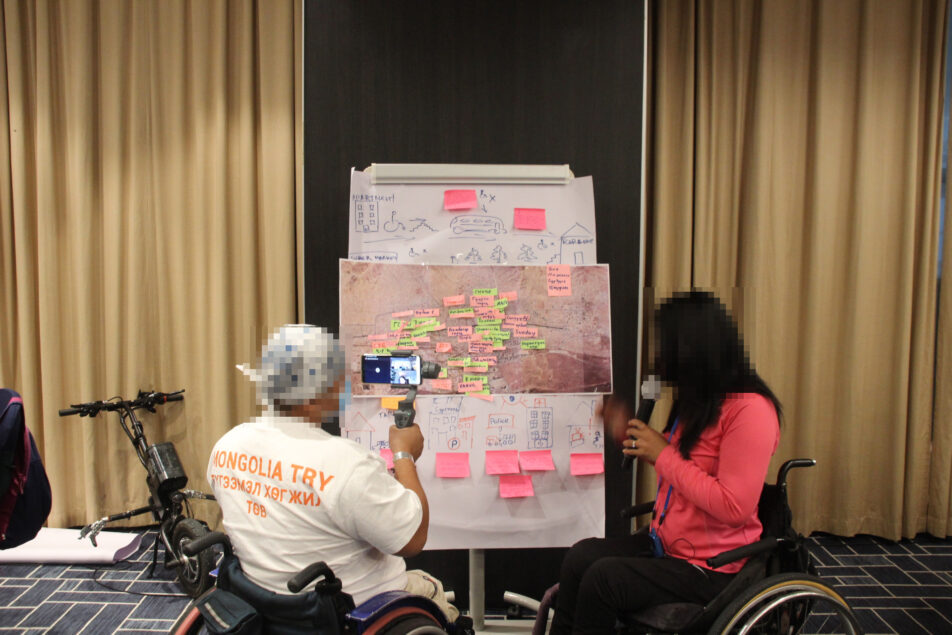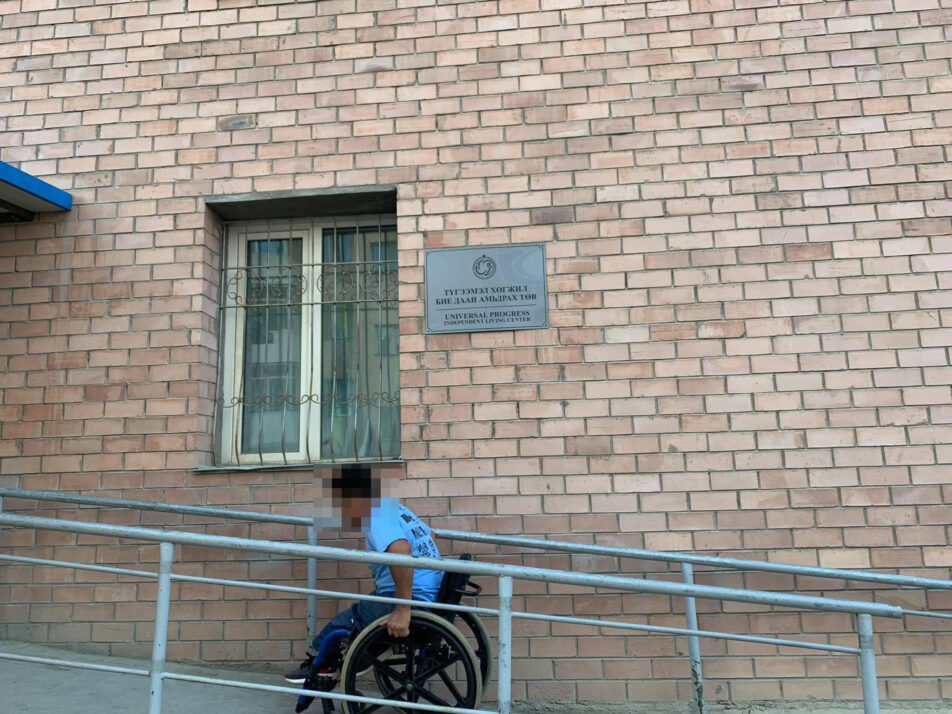Inclusive Design Research in a Pandemic: Working Remotely in Ulaanbaatar, Mongolia
Background
The Inclusive Infrastructure sub-programme of the AT2030 programme began in March 2020, right out the outset of the COVID-19 pandemic.
Over three years this part of the AT2030 programme will be conducting case studies in six cities on the current state of accessibility and inclusion of the built environment in each of those places. Our aim is to build a picture of what inclusive design ‘looks like’ in each city. Understanding that inclusive design approaches must be adaptive and responsive to the wider geographical, environmental, political and cultural context of these cities.
We are conducting research with the community, government and industry stakeholders to understand their perspectives on what the current barriers to inclusion in the built environment are and learn what examples of best practice currently exist in the city. These might include particularly inclusive buildings or infrastructure but also inclusive policies and services.
Our first case study took place in Ulaanbaatar, Mongolia. We worked closely with local partners to conduct the research. In March 2020, as we were due to begin the case study, Mongolia closed its border as the Coronavirus pandemic escalated. This meant we were unable to travel to Ulaanbaatar to conduct our research and we had to adapt to new ways of working remotely.
We are collaborating with an incredible local team based in Ulaanbaatar: AIFO, an Italian NGO that has been working in Mongolia since 1993 and two Disabled Persons’ Organisations: ‘Universal Progress’ Independent Living Center and Tegsh Niigem.
Insights from Tamirkhuu
Tamirkhuu Narangerel is a researcher on our Mongolia case study, he is an ecological chemist and working at Universal Progress ILC as a researcher and program manager. Here our colleague Tamirkhuu shares his perspective on working together, collaborating remotely and why this research is relevant to the country.
1. What is the research about?
Every urban area must have a safe, barrier-free, friendly environment, services, and activities for all of its people. The purpose of this study was to find out about the current situation for city inclusiveness of physical environment, city planning, policy decisions, the interests of the government, the needs of disabled people and what the problems are in Ulaanbaatar, Mongolia.
2. Why does this research matter?
It has been only 30 years since Mongolia established a new social system. In other words, there is a new approach of human rights, participation and responsibility. In particular, urban planning and policy decisions that are accessible to everyone have never existed before and will need to be addressed from now on. The results of this study are important because it is a time of great change and opportunity to influence government policies and decisions regarding people with disabilities rights.
3. What kinds of research activities took place?
During the study, we have conducted the following activities.
- Research preparation. Paper works and translations.
- Interviews with government stakeholders, who are in the field of disability and infrastructure accessibility of the city, about their inclusiveness/inclusive design-related policies and their understandings (15 people participated).
- Interviews with disabled people (users) about their daily lives and the physical barriers they experience in the environment (10 people participated).
- Photo diaries for 5 people, who have different disabilities, to document their daily life activities by photo.
- 2 workshops. One for the government stakeholders and one for disabled people. Most of the participants also participated in our interviews.
4. What was your experience of working together remotely?
The COVID-19 situation has changed our working methods. We realized that we need to use and learn more modern technology to save time and money.
- We had little experience in organizing and implementing public meetings and activities. So, we had some problems during the technical preparation and planning of online activities for the first workshop.
- We understood that we should consider the equipment capacities for online activities.
- Remote working has some advantages such as saving money, but it can also create some problems because you lack real face to face communication or in-deep understanding.
5. What did you learn?
During this research, we learnt inclusive research methods and techniques. We also learned how to plan and implement work like this, and the possibility of working from distance.
6. What would you like people to know about this work?
First of all, we would like to share the research results and recommendations with the government, private companies, and with people, the community. We also would like to introduce and implement the research planning methodology to our colleagues.

Highlights of our findings
We have just published our case study that explores inclusive design and accessibility of the built environment in Ulaanbaatar, Mongolia.
Some key highlights are:
- Policies need to be implemented effectively and standards around accessibility should be mandatory
- Inclusive design approaches should be integrated into planning processes, inclusive design should go beyond minimum standards of accessibility
- The importance of a culture of inclusion created through awareness and education
- Inclusive design should respond to context, Ulaanbaatar should set a vision for what inclusive design looks like that responds to its unique culture, geography and climate
